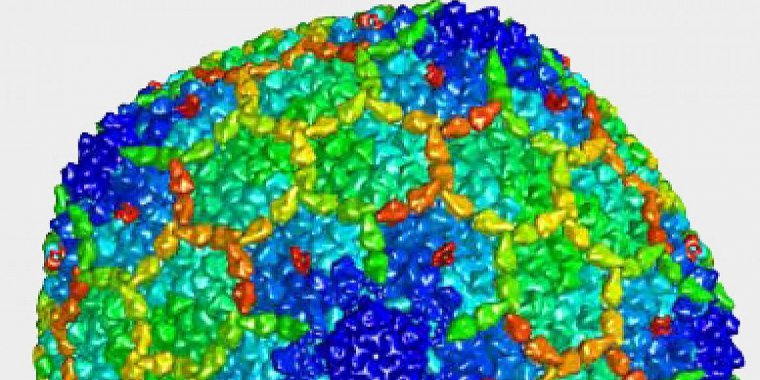| Health / Health News |
Memory gene goes viral
Two independent teams of scientists from the University of Utah and the University of Massachusetts Medical School have discovered that a gene crucial for learning, called Arc, can send its genetic material from one neuron to another by employing a strategy commonly used by viruses. The studies unveil a new way that nervous system cells interact.

Two independent teams of NIH-funded researchers discovered that the Arc gene can package its genetic material in a virus-like shell for delivery to nearby cells. Image credit: NIH
While Arc is known to play a vital role in the brain’s ability to store new information, little is known about precisely how it works. In addition, previous studies had detailed similarities between the Arc protein and proteins found in certain viruses like HIV, but it was unclear how those commonalities influenced the behavior of the Arc protein.
The University of Utah researchers began their examination of the Arc gene by introducing it into bacterial cells. To their surprise, when the cells made the Arc protein, it clumped together into a form that resembled a viral capsid, the shell that contains a virus’ genetic information. The Arc “capsids” appeared to mirror viral capsids in their physical structure as well as their behavior and other properties.
The University of Massachusetts scientists set out to scrutinize the contents of tiny sacks released by cells called extracellular vesicles.
Their experiments in fruit flies revealed that motor neurons that control the flies’ muscles release vesicles containing a high concentration of the Arc gene’s messenger RNA (mRNA), the DNA-like intermediary molecule cells use to create the protein encoded by a DNA sequence.
Both groups also found evidence that Arc capsids contain Arc mRNA and that the capsids are released from neurons inside those vesicles.
Further experiments performed by both teams of researchers suggested that Arc capsids act like viruses by delivering mRNA to nearby cells.
The researchers showed that Arc mRNA and capsids travel only in a single direction between fly cells — from motor neurons to muscles — and that the Arc protein binds to a specific part of the Arc mRNA molecule called the untranslated region that is not used to make the Arc protein.
They also found that flies lacking the Arc gene form fewer connections between their motor neurons. Moreover, while normal flies create more of these connections when their motor neurons are more active, flies without the Arc gene failed to do so. (National Institutes of Health)
YOU MAY ALSO LIKE




